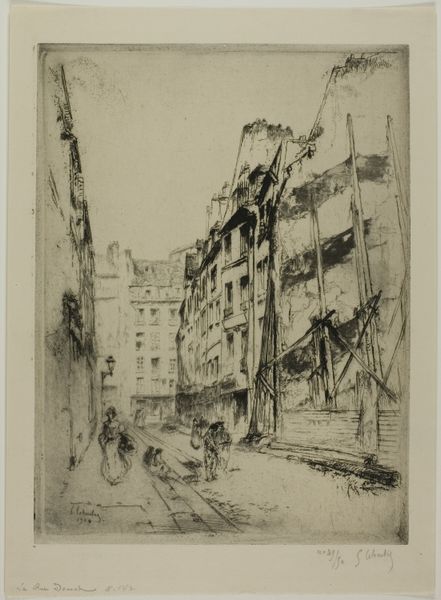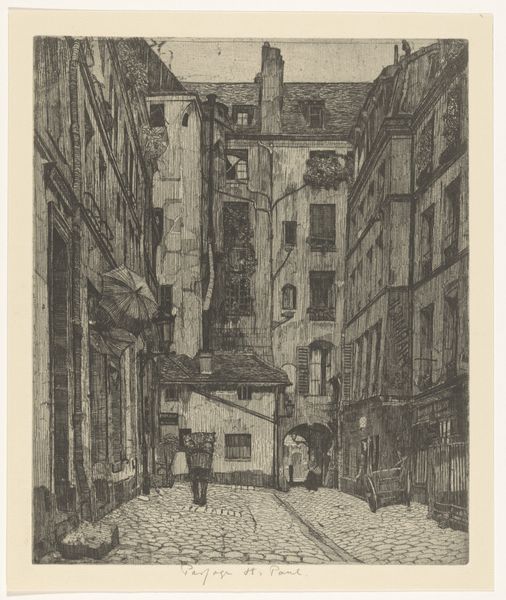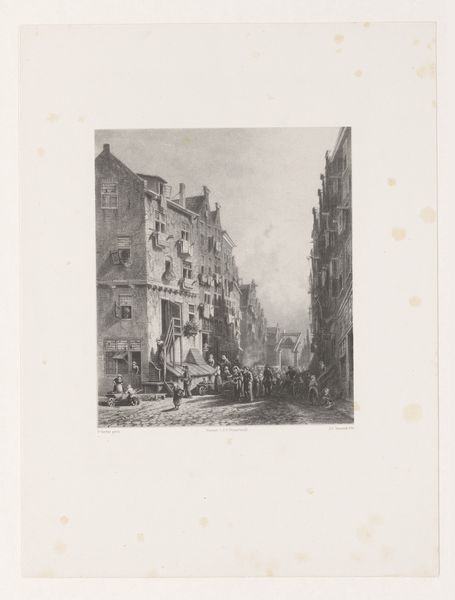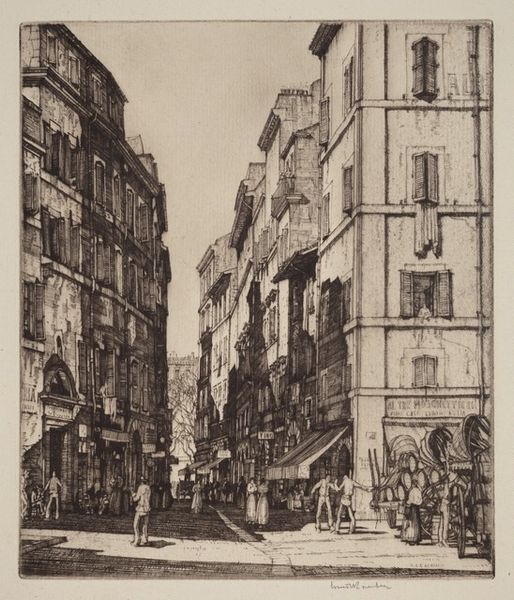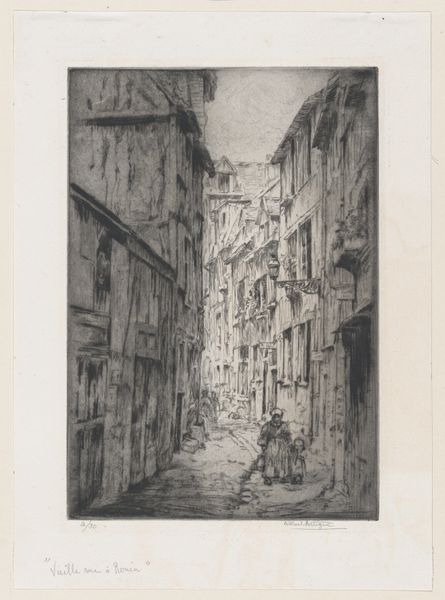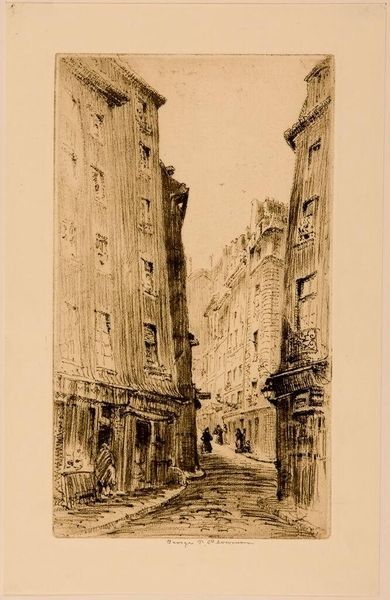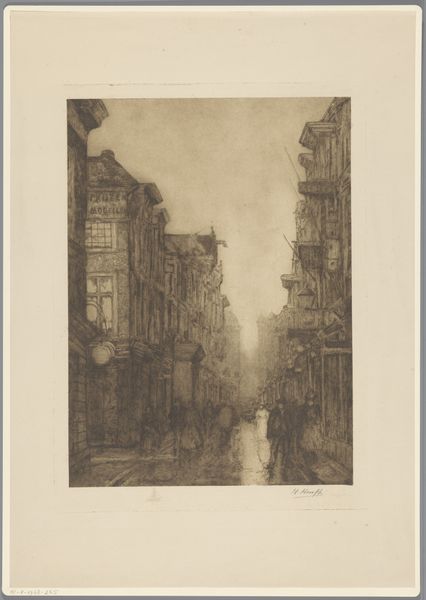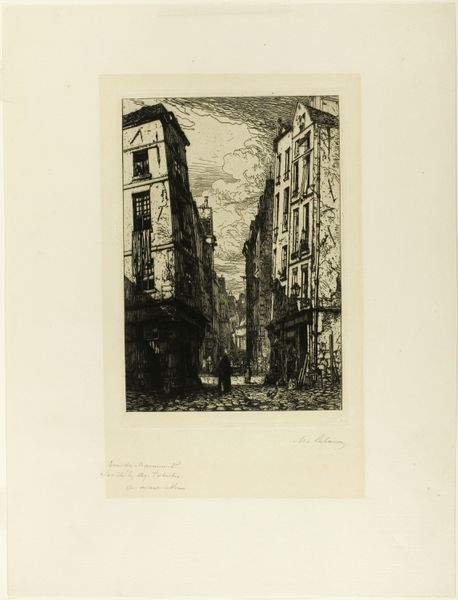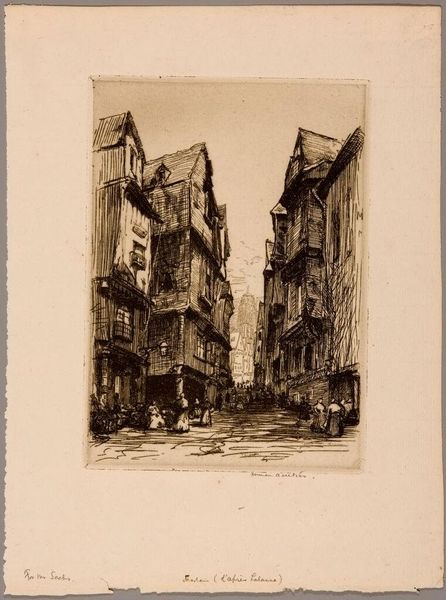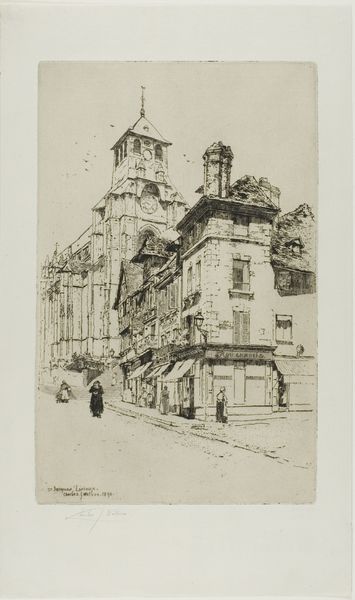
print, etching
# print
#
etching
#
cityscape
#
realism
Dimensions: 10 3/16 x 5 7/8 in. (25.88 x 14.92 cm) (plate)13 1/8 x 8 11/16 in. (33.34 x 22.07 cm) (sheet)
Copyright: Public Domain
Editor: This is "Latin Quarter" by George Taylor Plowman, circa 19th century. It's an etching, so a print. I'm immediately drawn to how the tall buildings seem to lean in, creating a feeling of enclosure, almost claustrophobia, despite it being a cityscape. What do you see in this piece? Curator: The compression of space, the converging lines, you’re right, they definitely speak to that feeling. Consider how often artists depict grand boulevards, expressions of progress. What is Plowman signaling by selecting this more intimate, arguably less celebratory, view? Look at the details – the lone figure, the textured facades. The Latin Quarter, historically, was the academic heart of Paris. Editor: So, could the buildings closing in represent the intense intellectual environment? Maybe even the weight of history? Curator: Precisely! The buildings themselves become symbolic, standing as witnesses to centuries of scholarship, debate, and artistic ferment. The very stones breathe history. This perspective might represent both the burden and the inspiration inherent in inheriting such a legacy. Notice how the light, or lack thereof, enhances that introspective mood. Do you feel that light helps express that? Editor: I see what you mean, it’s not a bright, optimistic scene. The subdued lighting adds to that feeling of the past pressing in. It definitely changes my initial thought of claustrophobia to a kind of…reverence. Curator: That shift in perception is exactly what Plowman's artistry achieves. He guides us from a purely visual experience towards a deeper emotional and intellectual understanding. Consider too, what elements of collective memory he chooses to include or exclude! Editor: I hadn't thought about what *isn't* there. This has really opened my eyes to seeing beyond just the surface of the print.
Comments
No comments
Be the first to comment and join the conversation on the ultimate creative platform.
